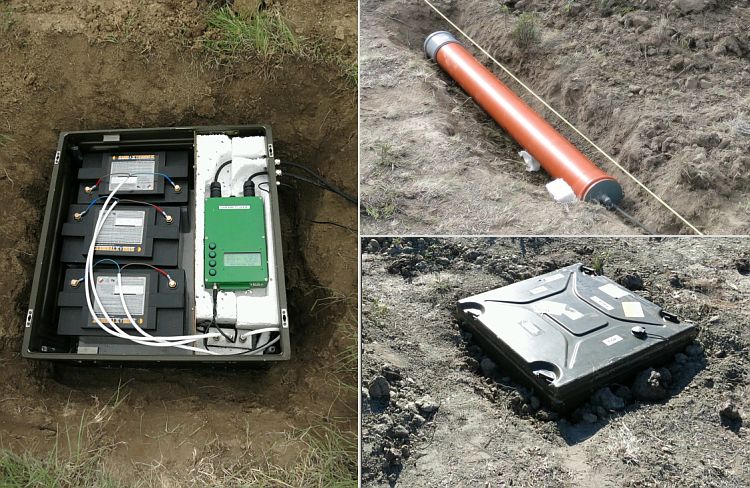World ELF Radiolocation Array - WERA
We've built a global radiolocator operating in the ELF (Extremely Low Frequency) range, which enables determining the locations and parameters of atmospheric discharges generating electromagnetic waves in the Earth-ionosphere waveguide. Its operation is based on measurement of Time of Arrival (TOA) and Radio Direction Finding (RDS) of the ELF electromagnetic field pulses. In the first phase the system consists of three stations located in Poland, United States and Argentina, operating in the frequency range 0.03 to 300 Hz.

The system tracks both cloud-to-ground and upward (cloud-to-ionosphere) discharges. Electromagnetic field pulses generated by lightning discharges propagate without much attenuation in the ELF range and can be observed everywhere on Earth. The propagation properties of the Earth-ionosphere waveguide are well known in this frequency range, and use of dedicated algorithms for signal analysis enables measuring the current moment and charge moment of atmospheric discharges. The World ELF Radiolocation Array enables measuring the fundamental parameters of lightning. In the case of the most common hybrid discharges it enables measuring the return stroke (RS) and the continuing current (CC) separately. In the case of upward discharges (cloud-to-ionosphere) it offers reconstructing the current moment waveform with a high time resolution (about 3 ms) and with a slow varying continuing current (down to 0.03 Hz). Other system does not enable such measurements.

A geophysical station composed of two magnetic antennas and an ELF receiver is the basic unit of the system. ELF electromagnetic field is measured continuously with the sampling frequency of 888 Hz and the results is sent to the data center in the Astronomical Observatory of the Jagiellonian University. Due to the required quality of observations the stations are located far from inhabited areas. The magnetic antennas and receiver are placed underground, below the freezing zone. The components placed on the surface could include an electric antenna, solar panels for power supply, and an antenna for wireless data transmission. Fully automatic measurement equipment was built in a low-power technology, and its autonomy is comparable with devices designed for space applications. Due to a small size, hidden infrastructure and low-power technology the station does not disturb the ecological balance of the environment. A large number of design solutions was already tested in the Hylaty geophysical station, located close to the boarder of the Bieszczady National Park.
In the next phase of development the stations will be connected by GSM/UMTS links with the data center, which will enable data processing in real time. We plan that it will remain in the Astronomical Observatory of the Jagiellonian University and that the data processing will be largely automated. The ELF pulses will be classified and after determining their location they will be analyzed to determine the charge moments of individual discharges and the current moment waveforms. The system will enable mapping cloud-to-ground and upward discharges and characterizing their type and intensity.
The main goal of the system is to provide data for studies of various class of upward discharges associated with Transient Luminosity Events (TLE). Currently, the atmospheric physics is facing a major breakthrough in understanding the linkage between its layers and their dependence on the state of space weather. In Europe this research is currently coordinated by TEA-IS (Thunderstorm Effects on the Atmosphere-Ionosphere System) program.
The WERA Project was supported by the HARMONIA grant No. 2012/04/M/ST10/00565
and the research grant No. 2011/01/B/ST10/06954 from National Science Centre in Poland.